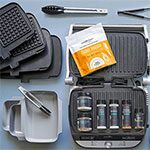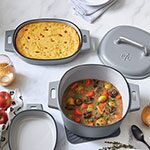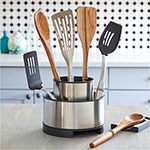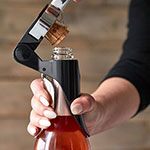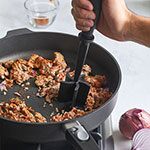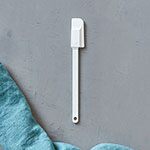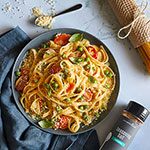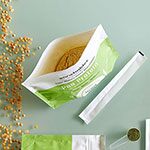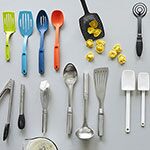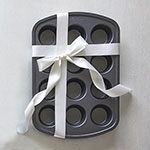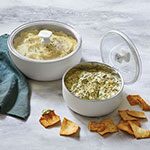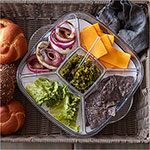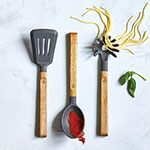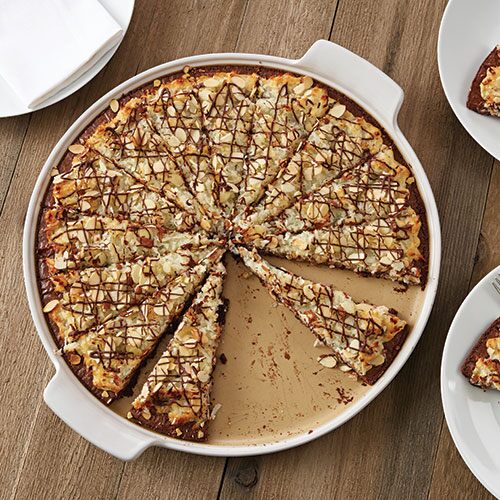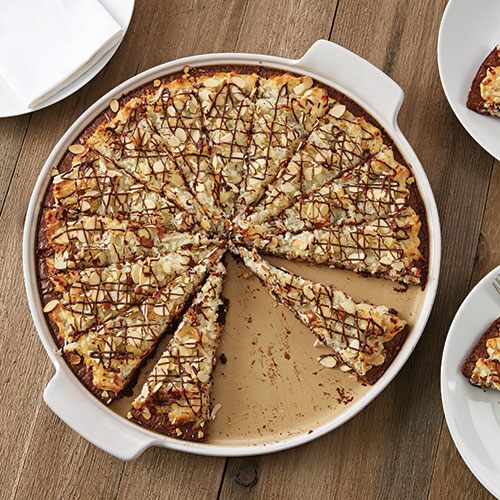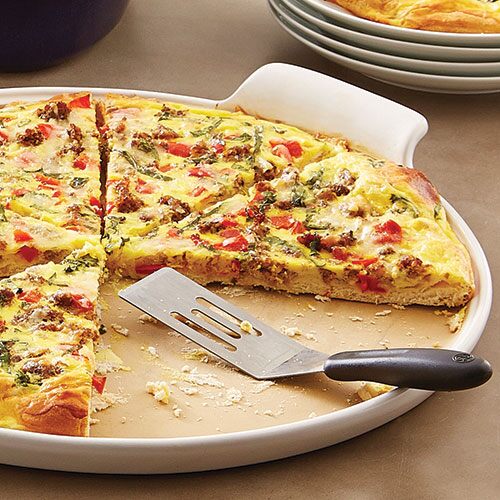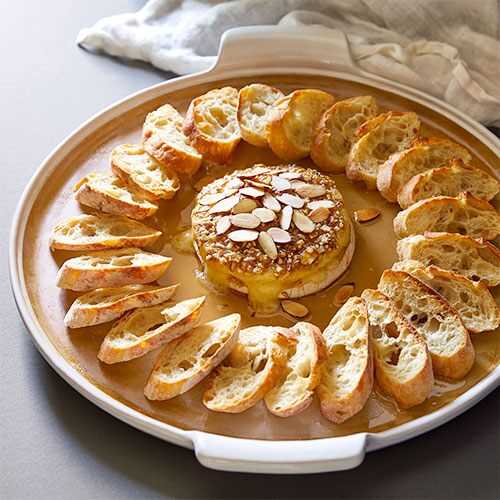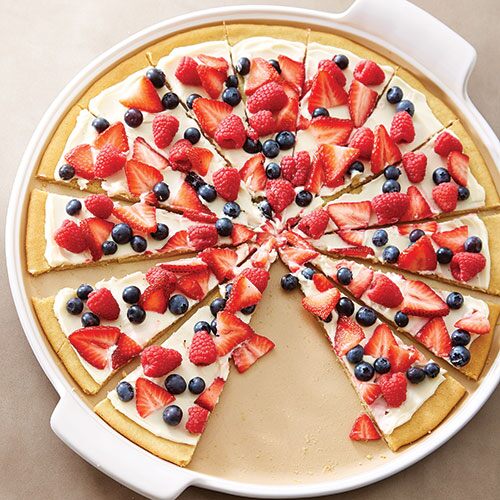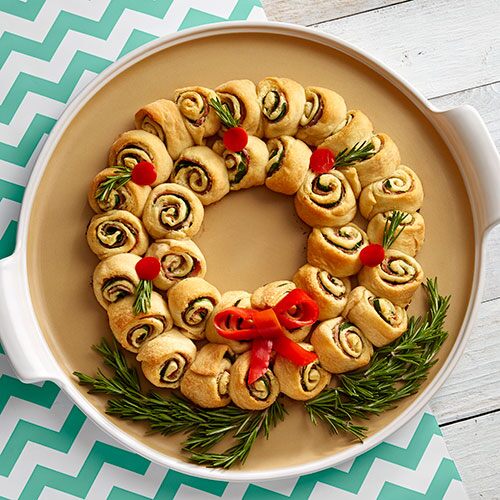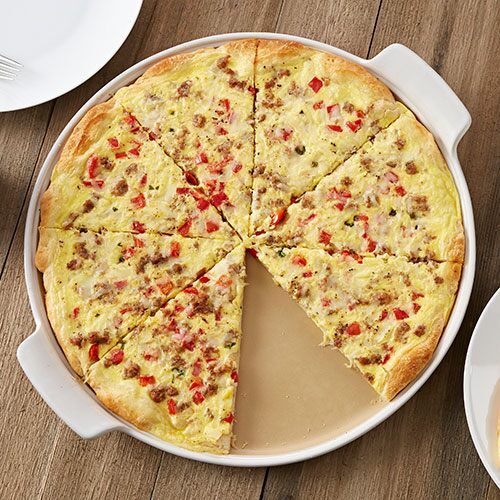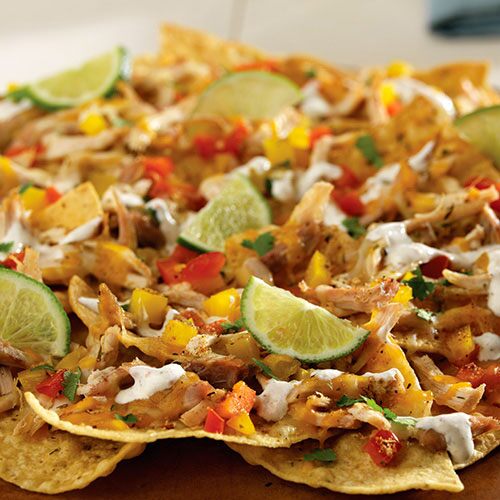White Large Round Stone
The White Large Round Stone is more than just a pizza stone! It's great for coffee cakes, rings, wreaths and more. The ½” lip around the edge keeps food and drippings contained, so you can even make brownies. The unglazed interior will give you the light, crispy results pizza stones are known for, while the beautiful white glazed exterior and contemporary handle design makes it the perfect oven-to-table piece.
Get a free ebook with 17 recipes, including 5 for the White Large Round Stone!
Details
- 15” diameter.
- 17¼” diameter with handles.
- Handles are easy to grip, even with oven mitts.
- Unglazed interior, white-glazed exterior.
- No preheating—just place food on Stoneware and cook.
- Amazing heat retention.
- Moisture is drawn away from food for light and crispy results.
- Won’t retain oils, odors or flavors.
- Nonstick “seasoning” builds up with every use: the darker it looks, the better it cooks!
- Microwave-, freezer- and conventional and convection oven-safe.
- Pan scraper included for easy cleanup.
- Made in the USA.
- Hand wash.
- Three-year guarantee.
Learn more about our stoneware collection here.
-
Use & Care
Use & Care
Use & Care
- Hand-wash only; wash prior to first use. Remove excess food with scraper. Clean glazed surfaces after each use to remove cooked on residues; use a kitchen brush as needed to scrub off residues. If not cleaned after each use, buildup will develop on the glaze. See deep clean glaze for more information. It is not recommended to use soap, detergent or an automatic dishwasher. Not dishwasher-safe. Dry thoroughly prior to storage.
- To deep clean unglazed surfaces:
- Prepare a baking soda paste by mixing ½ cup (125 mL) of baking soda with 3 tbsp (45 mL) water. Apply to desired areas and let stand for 15–20 minutes. Wipe off excess paste with nonabrasive sponge or cloth, rinse thoroughly and towel dry.
- To deep clean glaze:
- Make a baking soda paste as directed above. Using a soft, damp cloth, apply paste to glaze, scrubbing as needed. Rinse to remove paste and towel dry.
- As an alternative, a cleaning eraser can be used on the glaze surface only. Rinse thoroughly after cleaning and towel dry.
- Stoneware will naturally season and develop a natural nonstick surface over time with use.
- Slight sticking may occur for the first several uses. For best results, bake high-fat foods (e.g., refrigerated biscuits) or lightly brush with cooking oil for the first several uses. Aerosol nonstick spray is not recommended; it will create a sticky residue which is difficult to clean.
- Stoneware can be used in conventional, convection and microwave ovens, and is freezer-safe. Stoneware is heat-resistant to 450°F (230°C). Do not use Stoneware under broiler or on direct heat source. Follow oven manufacturer’s guidelines.
- Three-year guarantee for noncommercial use. Refer to sales receipt for details.
Tips
- Prevent breakage from thermal shock by avoiding extreme temperature changes.
- Do not preheat stone.
- At least two-thirds of Stoneware surface should be covered with food to avoid thermal shock. Always evenly distribute food over Stoneware surface; avoid clustering foods.
- Do not place dense, frozen food items (chicken breasts, pot pies, roasts or chops) on Stoneware. Always thaw dense, frozen food in refrigerator prior to baking.
- Foods refrigerated in Stoneware may be placed directly in a preheated oven.
- Do not place any other pan or rack on top of Stoneware while baking.
- Follow recipe temperature and baking time when using Stoneware. Short bake times (under 12 minutes) may need an additional 1–2 minutes.
Safeguards
- Hot Stoneware can cause burns if handled improperly. Always use a heat-resistant oven mitt or pad when handling hot Stoneware or placing on surfaces.
- Stoneware may scratch surfaces. Protect surfaces by using a protective barrier between Stoneware and surface.
- Avoid extreme temperature changes. Always allow Stoneware to cool to room temperature prior to adding liquid or cleaning. Do not use chipped or damaged Stoneware.
- Stoneware can break if bumped or dropped. If this occurs, use caution as broken pieces can be sharp and could cause injury.
- Stoneware should not touch the sides of the oven or oven door when closed.
Made in USA
Use & Care
- Hand-wash only; wash prior to first use. Remove excess food with scraper. Clean glazed surfaces after each use to remove cooked on residues; use a kitchen brush as needed to scrub off residues. If not cleaned after each use, buildup will develop on the glaze. See deep clean glaze for more information. It is not recommended to use soap, detergent or an automatic dishwasher. Not dishwasher-safe. Dry thoroughly prior to storage.
- To deep clean unglazed surfaces:
- Prepare a baking soda paste by mixing ½ cup (125 mL) of baking soda with 3 tbsp (45 mL) water. Apply to desired areas and let stand for 15–20 minutes. Wipe off excess paste with nonabrasive sponge or cloth, rinse thoroughly and towel dry.
- To deep clean glaze:
- Make a baking soda paste as directed above. Using a soft, damp cloth, apply paste to glaze, scrubbing as needed. Rinse to remove paste and towel dry.
- As an alternative, a cleaning eraser can be used on the glaze surface only. Rinse thoroughly after cleaning and towel dry.
- Stoneware will naturally season and develop a natural nonstick surface over time with use.
- Slight sticking may occur for the first several uses. For best results, bake high-fat foods (e.g., refrigerated biscuits) or lightly brush with cooking oil for the first several uses. Aerosol nonstick spray is not recommended; it will create a sticky residue which is difficult to clean.
- Stoneware can be used in conventional, convection and microwave ovens, and is freezer-safe. Stoneware is heat-resistant to 450°F (230°C). Do not use Stoneware under broiler or on direct heat source. Follow oven manufacturer’s guidelines.
- Three-year guarantee for noncommercial use. Refer to sales receipt for details.
Tips
- Prevent breakage from thermal shock by avoiding extreme temperature changes.
- Do not preheat stone.
- At least two-thirds of Stoneware surface should be covered with food to avoid thermal shock. Always evenly distribute food over Stoneware surface; avoid clustering foods.
- Do not place dense, frozen food items (chicken breasts, pot pies, roasts or chops) on Stoneware. Always thaw dense, frozen food in refrigerator prior to baking.
- Foods refrigerated in Stoneware may be placed directly in a preheated oven.
- Do not place any other pan or rack on top of Stoneware while baking.
- Follow recipe temperature and baking time when using Stoneware. Short bake times (under 12 minutes) may need an additional 1–2 minutes.
Safeguards
- Hot Stoneware can cause burns if handled improperly. Always use a heat-resistant oven mitt or pad when handling hot Stoneware or placing on surfaces.
- Stoneware may scratch surfaces. Protect surfaces by using a protective barrier between Stoneware and surface.
- Avoid extreme temperature changes. Always allow Stoneware to cool to room temperature prior to adding liquid or cleaning. Do not use chipped or damaged Stoneware.
- Stoneware can break if bumped or dropped. If this occurs, use caution as broken pieces can be sharp and could cause injury.
- Stoneware should not touch the sides of the oven or oven door when closed.
Made in USA


 Canada (en)
Canada (en) Germany (de)
Germany (de) Austria (de)
Austria (de)